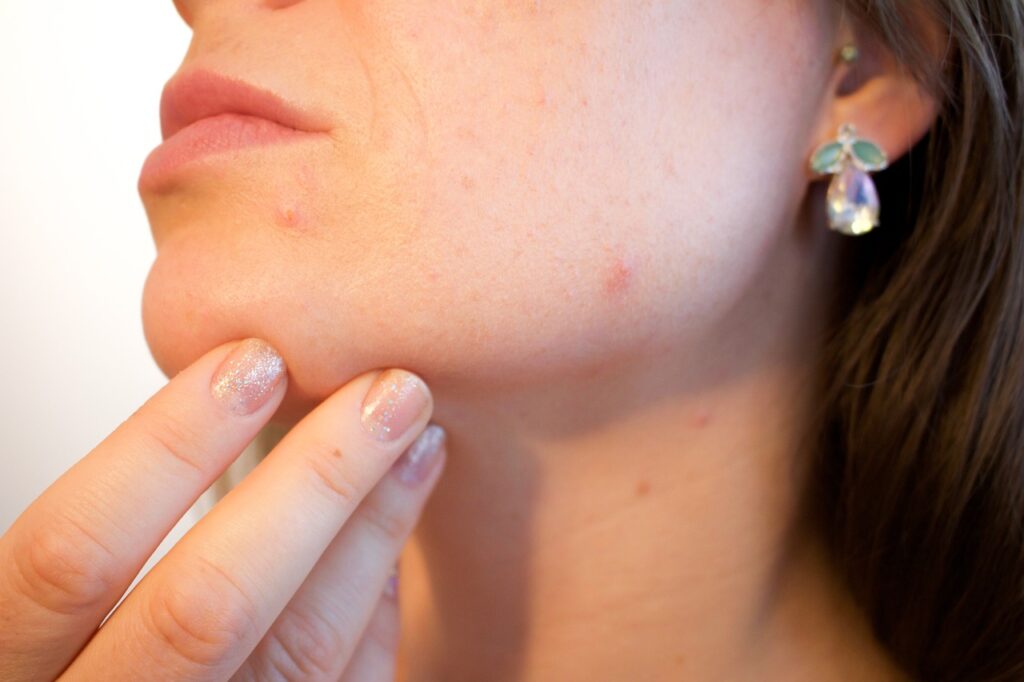Hey there, skin warriors! If you’re tired of battling those pesky pimples and looking for effective solutions, you’ve come to the right place. Today, we’re diving into the top 10 acne-fighting ingredients that you need to know about. These superstar ingredients can help you achieve clearer, healthier skin. Let’s get started!
Table of contents
Best Acne-Fighting Ingredients You Must Use
1. Salicylic Acid
Salicylic acid is a BHA (beta-hydroxy acid) known for its ability to penetrate deep into the pores and exfoliate from within. It helps to unclog pores, reduce inflammation, and prevent future breakouts. Salicylic acid is especially effective for those with blackheads and whiteheads.
How it Works: By breaking down the bonds between dead skin cells, salicylic acid promotes their shedding. This process prevents clogged pores and helps to clear up existing blemishes. Additionally, it has anti-inflammatory properties that soothe red and irritated skin.
Natural Sources:
- Willow bark
- Wintergreen leaves
- Sweet birch
How to Use: Incorporate a salicylic acid cleanser into your daily routine or apply a spot treatment directly to pimples. Products typically range from 0.5% to 2% concentration. Start with a lower concentration to see how your skin reacts.
2. Benzoyl Peroxide
Benzoyl peroxide is a potent antibacterial agent that kills the bacteria causing acne. It also helps to reduce excess oil and remove dead skin cells. Be cautious, though, as it can be quite drying.
How it Works: Benzoyl peroxide works by introducing oxygen into the pores, creating an environment where acne-causing bacteria cannot survive. It also has mild exfoliating properties, which help to keep the pores clear.

Natural Sources:
- While benzoyl peroxide is a synthetic ingredient, it is derived from a chemical process that starts with naturally occurring compounds.
How to Use: Start with a low concentration (2.5% to 5%) to avoid irritation. Apply as a spot treatment or use a benzoyl peroxide cleanser. Always moisturize afterward to prevent excessive dryness.
3. Tea Tree Oil
This natural ingredient has been used for centuries for its antibacterial and anti-inflammatory properties. Tea tree oil can help reduce redness and swelling associated with acne.
How it Works: Tea tree oil contains terpinen-4-ol, which has strong antimicrobial activity. It penetrates the skin to unblock the sebaceous glands, disinfect pores, and dry out whiteheads, blackheads, and pimples.
Natural Sources:
- Leaves of the Melaleuca alternifolia plant
How to Use: Dilute tea tree oil with a carrier oil (like jojoba or coconut oil) before applying it to the skin. Use it as a spot treatment. A typical dilution is 5% tea tree oil in 95% carrier oil.
4. Niacinamide
Also known as vitamin B3, niacinamide is a multi-tasking ingredient that reduces inflammation, regulates oil production, and improves the skin barrier. It’s gentle and suitable for all skin types.
How it Works: Niacinamide helps to reduce the production of sebum, which is often linked to acne. It also enhances the skin’s barrier function, improves skin texture, and evens out skin tone.
Natural Sources:
- Whole grains
- Green vegetables
- Fish and eggs
How to Use: Look for niacinamide serums or moisturizers and use them daily for best results. It can be layered with other active ingredients like hyaluronic acid and vitamin C.
5. Retinoids
Retinoids (like retinol) are vitamin A derivatives that speed up cell turnover, prevent clogged pores, and reduce the appearance of acne scars. They’re effective but can be irritating at first.
How it Works: Retinoids work by promoting the shedding of old, dead skin cells and encouraging the growth of new ones. This process helps to keep pores clear and reduces the formation of new acne lesions.

Natural Sources:
- Animal liver
- Fish oils
- Dairy products
How to Use: Start with a low concentration and use it at night. Gradually increase usage as your skin builds tolerance. Always apply sunscreen during the day, as retinoids can increase sun sensitivity.
6. Sulfur
Sulfur has antimicrobial properties that help to reduce bacteria and oil on the skin. It’s particularly effective for inflamed acne and can also help with blackheads and whiteheads.
How it Works: Sulfur works by drying out the surface of your skin to help absorb excess oil that may contribute to acne breakouts. It also has anti-inflammatory properties that help to soothe inflamed pimples.
Natural Sources:
- Volcanic areas
- Hot springs
- Mineral deposits
How to Use: Look for sulfur masks or spot treatments and use them as directed, typically a few times a week. Be mindful that sulfur products can have a strong smell.
7. Alpha Hydroxy Acids (AHAs)
AHAs, like glycolic acid and lactic acid, exfoliate the skin’s surface, promoting cell turnover and keeping pores clear. They can also help to fade acne scars and improve skin texture.
How it Works: AHAs dissolve the bonds between dead skin cells on the surface of the skin, allowing them to be sloughed away. This helps to prevent clogged pores and smooth out the skin’s texture.
Natural Sources:
- Glycolic acid: Sugar cane
- Lactic acid: Sour milk and yogurt
- Citric acid: Citrus fruits
How to Use: Use AHA-containing toners, serums, or masks a few times a week. Always follow up with sunscreen, as AHAs can increase sun sensitivity.
8. Zinc
Zinc is a mineral that helps to reduce inflammation and regulate oil production. It can be taken orally or applied topically.
How it Works: Zinc acts as an anti-inflammatory agent and helps to balance oil production in the skin. It also aids in healing damaged skin and preventing future breakouts.
Natural Sources:
- Shellfish
- Red meat
- Pumpkin seeds
How to Use: Look for zinc oxide creams or take zinc supplements, but consult with a healthcare provider before starting any new supplement regimen.
9. Clay
Clay, such as bentonite or kaolin, is great for absorbing excess oil and drawing out impurities from the skin. It’s perfect for those with oily or combination skin.
How it Works: Clay masks work by absorbing oil, dirt, and toxins from the skin, which helps to keep pores clear and reduce the occurrence of acne. They also have a mattifying effect on the skin.
Natural Sources:
- Bentonite: Volcanic ash
- Kaolin: Weathered rocks
How to Use: Use a clay mask once or twice a week to keep your skin clear and reduce shine. Apply the mask evenly, let it sit for 10-15 minutes, and rinse off with warm water.
10. Witch Hazel
Witch hazel is a natural astringent that helps to tighten pores, reduce inflammation, and remove excess oil. It’s gentle and can be used daily.
How it Works: Witch hazel contains tannins, which have astringent properties that can help to tighten and tone the skin, reduce inflammation, and minimize the appearance of pores.
Natural Sources:
- Bark and leaves of the witch hazel shrub (Hamamelis virginiana)
How to Use: Apply witch hazel toner with a cotton pad after cleansing and before moisturizing. It can be used daily, and it’s especially beneficial for those with oily or acne-prone skin.
Final Thoughts
Incorporating these acne-fighting ingredients into your skincare routine can make a significant difference in managing breakouts. Remember, consistency is key! Start slowly, especially with potent ingredients, and listen to your skin. Always patch-test new products and consult with a dermatologist if you’re unsure about the best approach for your skin type.
Additional Tips for Fighting Acne
- Diet and Hydration: A balanced diet rich in fruits, vegetables, and plenty of water can significantly impact your skin’s health.
- Regular Cleaning: Clean your makeup brushes


One Comment
One Ping
Pingback:Top Natural Remedies for Common Ailments